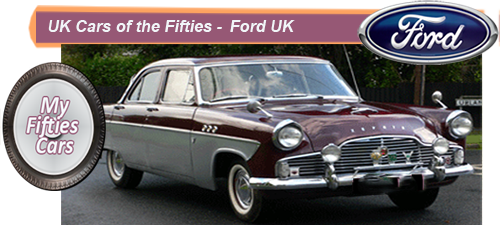 The Ford Motor Company and its famous if not infamous founder, Henry Ford, were the unrivalled driving force behind the upsurge of the car industry in the 20th Century and onwards in the low cost sector.
The Ford Motor Company and its famous if not infamous founder, Henry Ford, were the unrivalled driving force behind the upsurge of the car industry in the 20th Century and onwards in the low cost sector.
 Ford formed his company in 1903 in the small town of Dearborn, Michigan, always with the simple intention of producing as many vehicles as possible in a limited area within a short time frame, a formula that soon became known as mass-production.
Ford formed his company in 1903 in the small town of Dearborn, Michigan, always with the simple intention of producing as many vehicles as possible in a limited area within a short time frame, a formula that soon became known as mass-production.
The Ford formula proved to be a winner, with their models being snapped up as soon as they rolled off the production line- which they did in impressive quantities.
By 1911 Ford US were turning out around seventy thousand vehicles a year, with that number increasing dramatically over the next decade as Henry Ford honed and improved his methods of mass production.
Convinced that his winning formula could be duplicated anywhere, Ford began to set up distribution or production units in Europe, particularly in the United Kingdom, Spain and Germany.
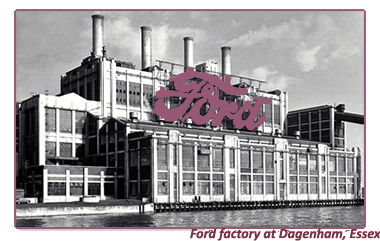 The first Ford satellite to begin to operate was in the UK, with Model Ts assembled there from 1911 onwards. Starting their European expansion in Britain was a far from chance decision, as Ford envisioned that there he would establish his centre for marketing throughout Europe.
The first Ford satellite to begin to operate was in the UK, with Model Ts assembled there from 1911 onwards. Starting their European expansion in Britain was a far from chance decision, as Ford envisioned that there he would establish his centre for marketing throughout Europe.
![]()
 Ford continued to gingerly increase their expansion for a few years until their planned expansion was forced to be put on hold with the outbreak of World War One in 1914.
Ford continued to gingerly increase their expansion for a few years until their planned expansion was forced to be put on hold with the outbreak of World War One in 1914.
Activities remained frozen for more than a decade in the UK till the late Twenties.
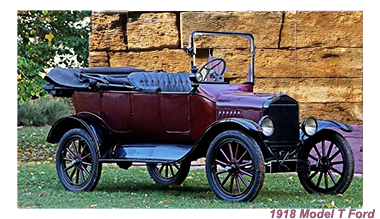
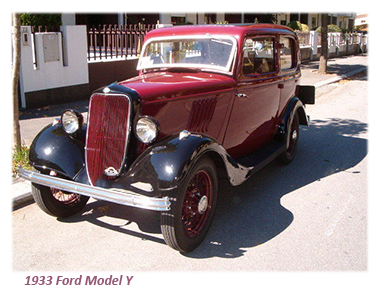 Early in 1928, Henry Ford visited the United Kingdom for the first time, where he announced his company's intention to not only to jump-start Ford UK but also to invest in a huge plant to be built in Dagenham, Essex, that would be the centre for all of the companies situated in Europe.
Early in 1928, Henry Ford visited the United Kingdom for the first time, where he announced his company's intention to not only to jump-start Ford UK but also to invest in a huge plant to be built in Dagenham, Essex, that would be the centre for all of the companies situated in Europe.
To oversee their European operations, Ford appointed well-known UK industrialist Sir Percival Perry.
Sir Percival, very experienced and well connected within the UK car industry, had met with Henry Ford a few years earlier when he visited the US to represent the Central Motor Agency, where he was a major shareholder.
The Central Motor Agency represented Ford US in the United Kingdom during this period.
![]()
The normally reticent Ford took a liking to Perry, warming to the young Englishman's suggestion that instead of merely assembling existing Ford US models in the UK, it would serve the company better to develop designs that would be more suited to the UK climate and public tastes.
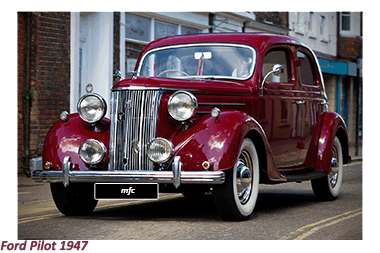 Perry's plans were put into action and the first Ford to be designed and produced entirely in Europe, the 933 cc engined Ford Model Y rolled off the production line at Dagenham in the summer of 1932.
Perry's plans were put into action and the first Ford to be designed and produced entirely in Europe, the 933 cc engined Ford Model Y rolled off the production line at Dagenham in the summer of 1932.
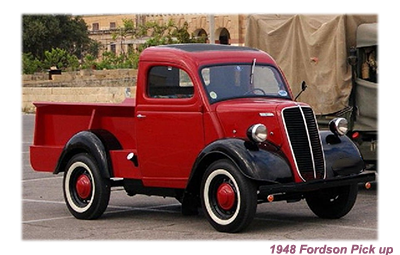 By the Thirties, Ford's market share in the UK and later across Western Europe grew dramatically, with the Dagenham plant churning out tens of thousands of side valve-engined 8hp and I0hp models annually, as well as a limited number of V8 engined designs.
By the Thirties, Ford's market share in the UK and later across Western Europe grew dramatically, with the Dagenham plant churning out tens of thousands of side valve-engined 8hp and I0hp models annually, as well as a limited number of V8 engined designs.
Sales for Ford UK models were hitting a peak in the late Thirties, till production was put on hold with the outbreak of the Second World War. All of Dagenham's massive production capabilities, from that point, was directed towards the war effort.
![]()
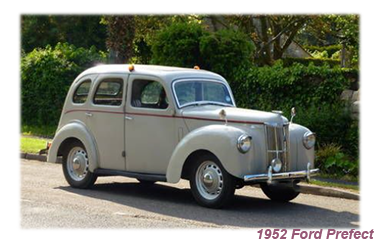 Instaed the company plodding along with side-valve engines powering a range of cars with a decidedly pre-war look, the ZY Series Anglia / Prefect, and the V8 engined Pilot.
Instaed the company plodding along with side-valve engines powering a range of cars with a decidedly pre-war look, the ZY Series Anglia / Prefect, and the V8 engined Pilot.
 Eventually, Ford UK began to shake off the cobwebs and launched their first all-new post-war model range - the Consul/Zephyr family of 1950.
Eventually, Ford UK began to shake off the cobwebs and launched their first all-new post-war model range - the Consul/Zephyr family of 1950.
These models were the first Ford-UK models to use an overhead-valve engine, independent front suspension and unit construction bodywork.
Three years later, this range was followed by the new-style Anglia/Prefect 100E range, still fitted with side valve engines. Although the financial gap between the 100E and the Popular was too significant for many would-be buyers, what it did , according to Ford, was to encourage the motorcyclist to buy a second-hand car.
In 1956 Ford introduced improved versions of their larger models (the Consul, Zephyr and Zodiac.
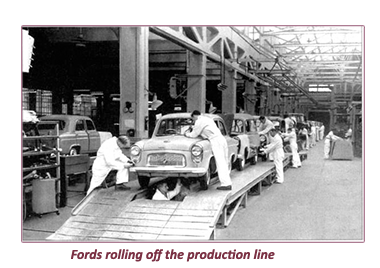 The large-sized family saloons sat on a longer wheelbase, powered by larger engines and with their improved weight distribution made for a considerably better ride than their predecessors.
The large-sized family saloons sat on a longer wheelbase, powered by larger engines and with their improved weight distribution made for a considerably better ride than their predecessors.
 To complete the Fifties' picture, the latest big Fords were also available in estate car and convertible forms.
To complete the Fifties' picture, the latest big Fords were also available in estate car and convertible forms.
By the end of the decade, Ford UK was well on their way to becoming the leading car manufacturer in the United Kingdom.
The Dagenham plant remained Ford-UK's only private-car assembly plant until 1963, when a second assembly plant, at Harewood (on the outskirts of Liverpool), was added to cope with demand.


